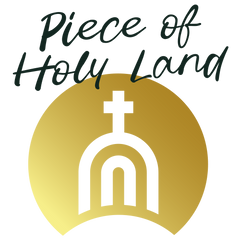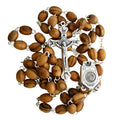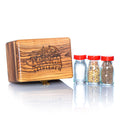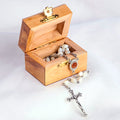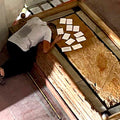Golgotha (Calvary) - The Sacred Hill of the Crucifixion
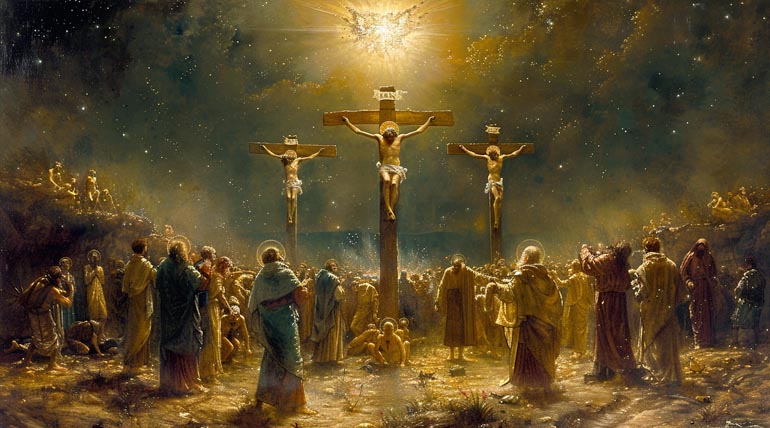
The Historical, Theological, and Spiritual Significance of Golgotha (Calvary)
The Origins and Meaning of Golgotha
The name Golgotha derives from the Aramaic term meaning "Place of the Skull" (Gagûltâ). The Latin equivalent, Calvaria, gave rise to the English term Calvary. The precise reason for this designation has been the subject of theological and historical debate. Some early Christian traditions suggest that the hill’s shape resembled a human skull, while others propose that it was named due to the presence of numerous skulls from executions carried out at the site. Another significant interpretation, rooted in Jewish and Christian tradition, holds that Golgotha was where Adam’s skull was buried, emphasizing its connection to human sin and redemption.
The four Gospels (Matthew 27:33, Mark 15:22, Luke 23:33, John 19:17) all reference Golgotha as the place where Jesus was crucified. The site was located outside the walls of ancient Jerusalem, near a public thoroughfare, ensuring that crucifixions were visible to passersby. This visibility was a key aspect of Roman execution methods, intended as both punishment and deterrence. At the same time, the site’s location outside the city fulfilled Jewish sacrificial imagery, in which sin offerings were burned outside the camp (Hebrews 13:12), further solidifying Golgotha’s theological significance.

The Theological Significance of Golgotha
Golgotha is at the heart of Christian theology as the place where Christ’s atoning sacrifice was made. Several theological themes emerge from its significance:
-
Messianic Prophecy Fulfilled: Isaiah 53:5 foretells the suffering of the Messiah, stating, "He was pierced for our transgressions, he was crushed for our iniquities." Jesus' crucifixion at Golgotha is seen as the direct fulfillment of this prophecy.
-
The Redemptive Power of the Cross: Golgotha is where the doctrine of substitutionary atonement is realized—Christ bore the sins of humanity so that believers might receive salvation (1 Peter 2:24).
-
The Completion of Salvation History: Christ’s final words on the cross, "It is finished" (John 19:30), signify the completion of God’s redemptive plan, affirming the sufficiency of His sacrifice.
-
Symbol of Divine Mercy: The crucifixion at Golgotha established the cross as the defining symbol of Christianity, representing both the suffering of Christ and the triumph over sin and death.
-
The Role of Blessed Crosses and Crucifixes: The blessed cross and crucifix, symbols of Golgotha’s significance, are widely used in Christian devotion, representing faith, protection, and a tangible connection to Christ’s sacrifice.
Golgotha and the Church of the Holy Sepulchre
Golgotha has been enshrined within the Church of the Holy Sepulchre since the 4th century when Emperor Constantine the Great ordered the construction of a basilica over both the crucifixion site and the tomb of Jesus. This church remains the most sacred Christian pilgrimage destination, housing key locations from Christ’s Passion.
Visitors to the church can venerate:
-
The Rock of Calvary, where Christ’s cross was placed, is now visible beneath a glass enclosure.
-
The Chapel of Golgotha, is a solemn and ornate site for prayer and reflection.
-
The Stone of Anointing, where, according to tradition, Jesus’ body was prepared for burial.
-
The Aedicule, the structure enclosing Christ’s empty tomb, affirms the resurrection.
-
The Chapel of Adam is located beneath the Calvary. Tradition holds that the blood of Christ seeped through the rock to reach Adam’s skull, symbolizing redemption for humanity.
-
The Chapel of St. Helena, is dedicated to the mother of Constantine, who is credited with discovering the True Cross.
-
The Chapel of the Finding of the Cross, marks the site where St. Helena is believed to have uncovered the remnants of Christ’s cross.
-
The Chapel of the Derision, believed to be the place where Christ was mocked and crowned with thorns before His crucifixion.
For many pilgrims, the experience of touching the Rock of Calvary and praying is a profound moment of faith. Others seek to bring home a blessed cross or crucifix from Jerusalem, linking their pilgrimage to their personal devotion. Those who can't make it to Golgotha in person, can still connect spiritually through Piece of Holy Land Prayer Requests Courier service to the Church of the Holy Sepulchre. Sending prayers to this sacred site allows believers to join their petitions with Christ's sacrifice, enhancing their spiritual journey.

Golgotha’s Influence on Christian Art and Worship
Throughout Christian history, Golgotha has been a primary subject in religious art, inspiring countless depictions of the Passion of Christ. Iconography frequently portrays the three crosses on the hill, with Jesus in the center, flanked by the two thieves. Renaissance painters such as Giotto, Caravaggio, and Rubens immortalized Golgotha in dramatic and emotionally charged masterpieces.
Beyond visual art, Golgotha plays a central role in Christian worship and meditation:
-
Lenten Reflections and the Stations of the Cross focus on Christ’s suffering at Golgotha.
-
The Veneration of the Cross on Good Friday directs believers to contemplate its significance.
-
Blessed Crucifixes serve as devotional aids, reminding Christians of the sacrifice made on Golgotha.
Many Christians wear a blessed cross or crucifix as a form of spiritual protection and commitment, keeping the memory of Christ’s suffering and resurrection close to their hearts.

Golgotha and Modern Pilgrimage
Pilgrims continue to flock to Golgotha, now enclosed within the Church of the Holy Sepulchre, to experience firsthand the place where salvation was accomplished. Touching the site, praying at the altar of the crucifixion, and witnessing the Holy Fire ceremony at Christ’s tomb reinforce their faith in the power of the cross.
For those unable to physically journey to Golgotha, spiritual connection remains possible through Prayer Requests at the Church of the Holy Sepulchre. By sending prayers to be placed at this sacred site, believers can unite their petitions with Christ’s sacrifice, deepening their spiritual journey.
Furthermore, those seeking a lasting devotional object may choose from our collection of Blessed Crosses and Crucifixes, ensuring that the message of Golgotha remains central to their faith.
The Everlasting Significance of Golgotha
Golgotha is not merely a place of historical importance; it is the culmination of divine redemption. It stands as a sacred reminder of the depth of Christ’s love, His victory over sin, and the fulfillment of God’s salvific plan.
Whether one visits in person, sends a prayer to be placed at Golgotha or keeps a blessed cross or crucifix as a reminder of the Passion, this sacred site continues to call believers into a deeper understanding of their faith. Golgotha remains an eternal symbol of sacrifice, redemption, and divine grace, inviting all who reflect upon it to encounter the power of the cross anew.
SHARE:

